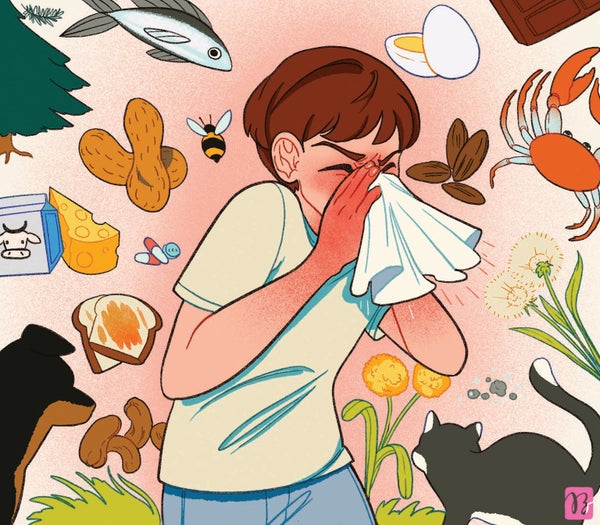February 29, 2024
4 min read
Helpful Gut Bacteria Seem to Reduce Allergic Disease in Kids
In babies, the right combo of gut bacteria might stave off later allergies, so scientists are testing “cocktails” of helpful microbes as therapy
I stopped sending peanut butter and jelly sandwiches to school with my kids around 2007. That was roughly the moment when people started talking about a dramatic rise in the number of children with serious nut allergies. Cases of all kinds of allergies in youngsters have increased since then. The prevalence of asthma has doubled since the 1980s, and more than one quarter of children have eczema, food allergies, or hay fever or other seasonal allergies.
A host of studies from around the world strongly suggest that our allergy epidemic is the result of reduced exposure to germs in early life. During this critical window of time, an infant’s immune system learns to defend against dangerous microbes and to tolerate good ones that can live in the gut and aid in processes such as digestion. This immune education comes from encountering a wide variety of germs. But as social habits have changed, leading us to spend more time indoors, these encounters have been reduced, and immune overreactions—allergies—have climbed.
This idea, introduced decades ago as the “hygiene hypothesis” and refined over the years, is supported by epidemiological studies showing that having older siblings, attending day care, living on a farm and having pets protect against allergies. But more antiseptic early lives—delivery by cesarean section, not receiving breast milk and getting antibiotic therapy in the first year of life—seem to increase risk.
On supporting science journalism
If you’re enjoying this article, consider supporting our award-winning journalism by subscribing. By purchasing a subscription you are helping to ensure the future of impactful stories about the discoveries and ideas shaping our world today.
Now stronger evidence…
Read the full article here







